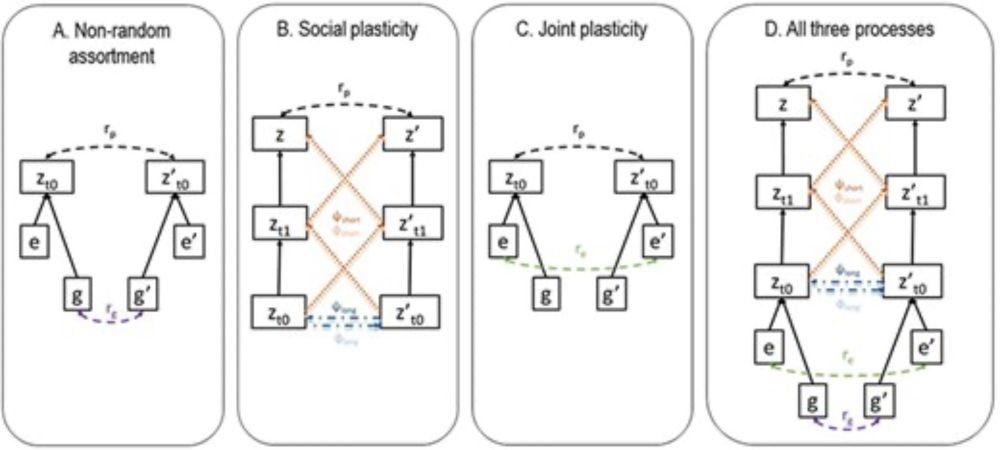Really cool study, Oriol and team! And good news (somewhat?) for the Ibiza wall lizards! 🦎
29.07.2025 10:17 — 👍 1 🔁 0 💬 0 📌 0
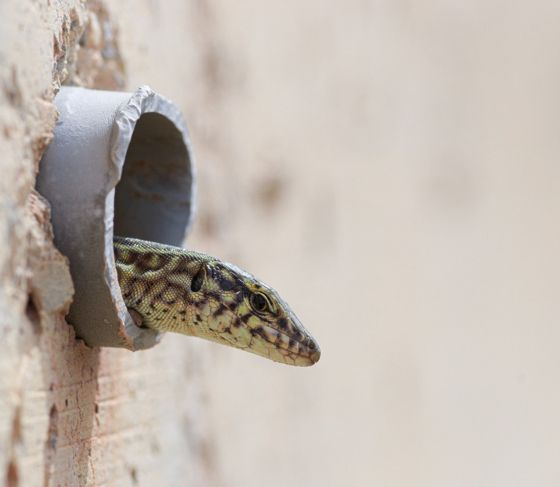
Urbanization enhances biodiversity loss. Yet sometimes cities may *paradoxically* shelter species threatened by other components of global change
We studied if urban areas are sheltering an endangered iconic lizard 🦎 from a rapidly spreading predator 🐍 in Ibiza👇
📸G. Casbas
doi.org/10.1016/j.ge...
16.07.2025 14:36 — 👍 34 🔁 16 💬 2 📌 0
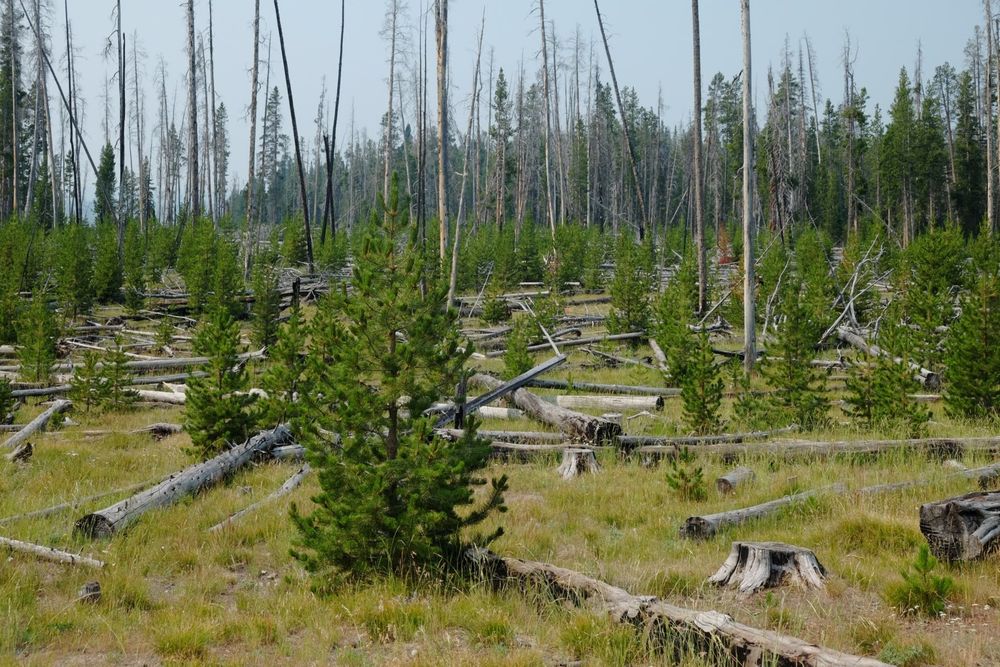
Come work with us! We are looking to fill a PhD (mountain forest management) and PostDoc position (forest adaptive capacity):
PhD: www.lss.ls.tum.de/fileadmin/w0...
Postdoc:
www.lss.ls.tum.de/fileadmin/w0...
Please feel free to share this opportunity with anyone who might be interested!
28.07.2025 09:24 — 👍 25 🔁 26 💬 0 📌 0
Well, I'd say... it really nailed the ‘perplexity’ vibe of your findings!
24.07.2025 13:42 — 👍 1 🔁 0 💬 0 📌 0
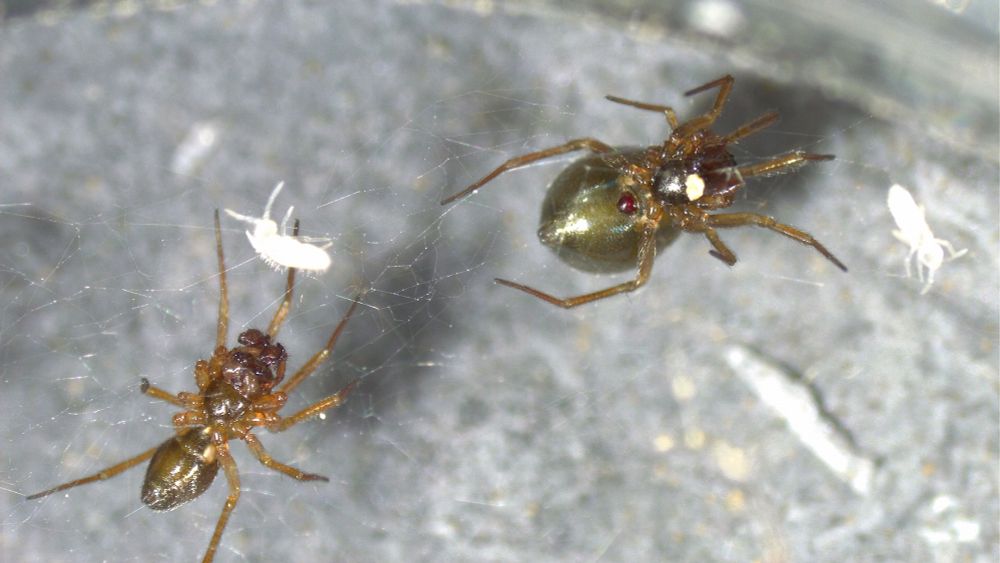
Two small brown spiders on their webs with white springtails. The smaller male spider is on the left, while the larger female spider on the right has a visible red mating plug that develops after her first mating to ensure paternity. Small white springtails, which serve as food for the spiders, are scattered on the silky webs.

Three stereo-microscope views of Mermessus trilobatus (dwarf spider): (a) an unmated female seen from above with a smooth epigynal, (b) a mated female showing the rounded mating plug covering her epigyne, and (c) a male with slender legs and elongated abdomen, all on a neutral background.
Tiny #spiders, huge impact! Meet #MermessusTrilobatus – a North-American dwarf spider that has stormed across #Europe in <50 yrs. We follow every silk thread of its success story 🕸️✨ Swipe through this thread for the highlights! #InvasiveSpecies #Ecology
24.07.2025 09:12 — 👍 24 🔁 10 💬 2 📌 0
Really like this illustration 👌👌👌 So good!
24.07.2025 13:28 — 👍 1 🔁 0 💬 1 📌 0
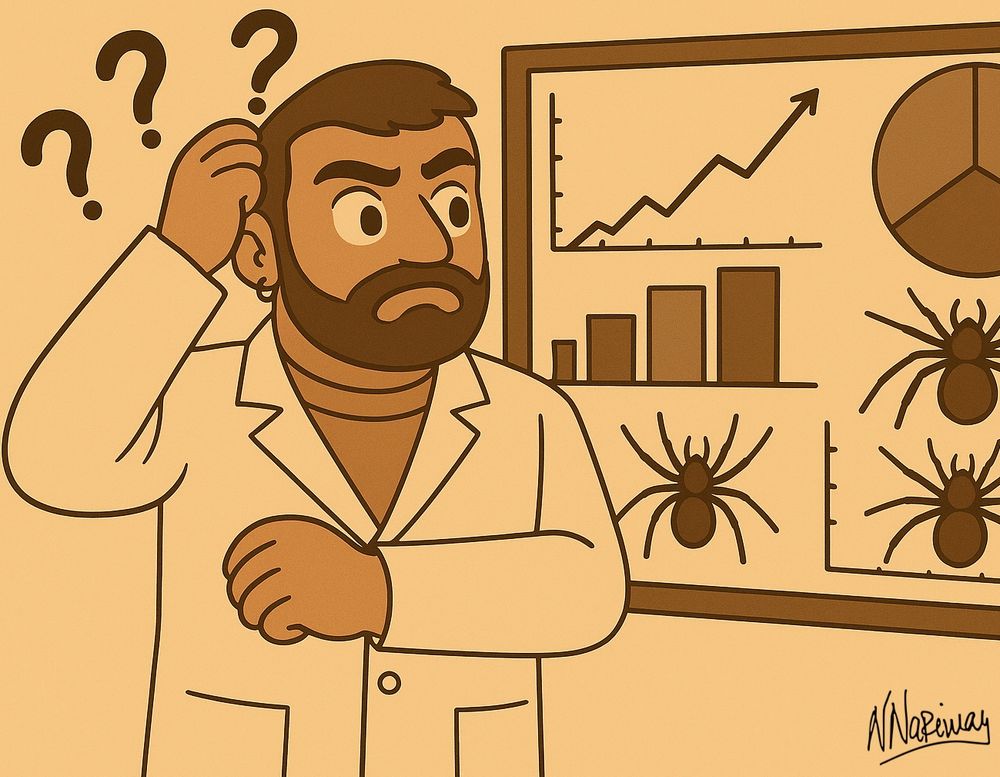
Cartoon illustration of a dark-haired, bearded researcher wearing a white lab coat and a small hoop earring. He scratches his head with a worried expression while standing in front of a presentation board. The board shows a zig-zagging upward line graph, a vertical bar chart, a circular pie chart, and several spider silhouettes, all hinting at invasion data. Three large black question marks hover above his head, emphasizing confusion. The background and chart elements use muted beige and brown tones that match the scientist’s lab coat and overall palette.
Wait...🤔 They're TERRIBLE at handling disturbance, get eaten more by native predators, yet somehow conquered 1,400km of Europe in 45 years? HOW?! 🤯 The answer in establishment might lie in their reproductive behaviour (work in progress - stay tuned!). But let's look at how they spread so fast! ⬇️
24.07.2025 09:12 — 👍 3 🔁 1 💬 2 📌 0
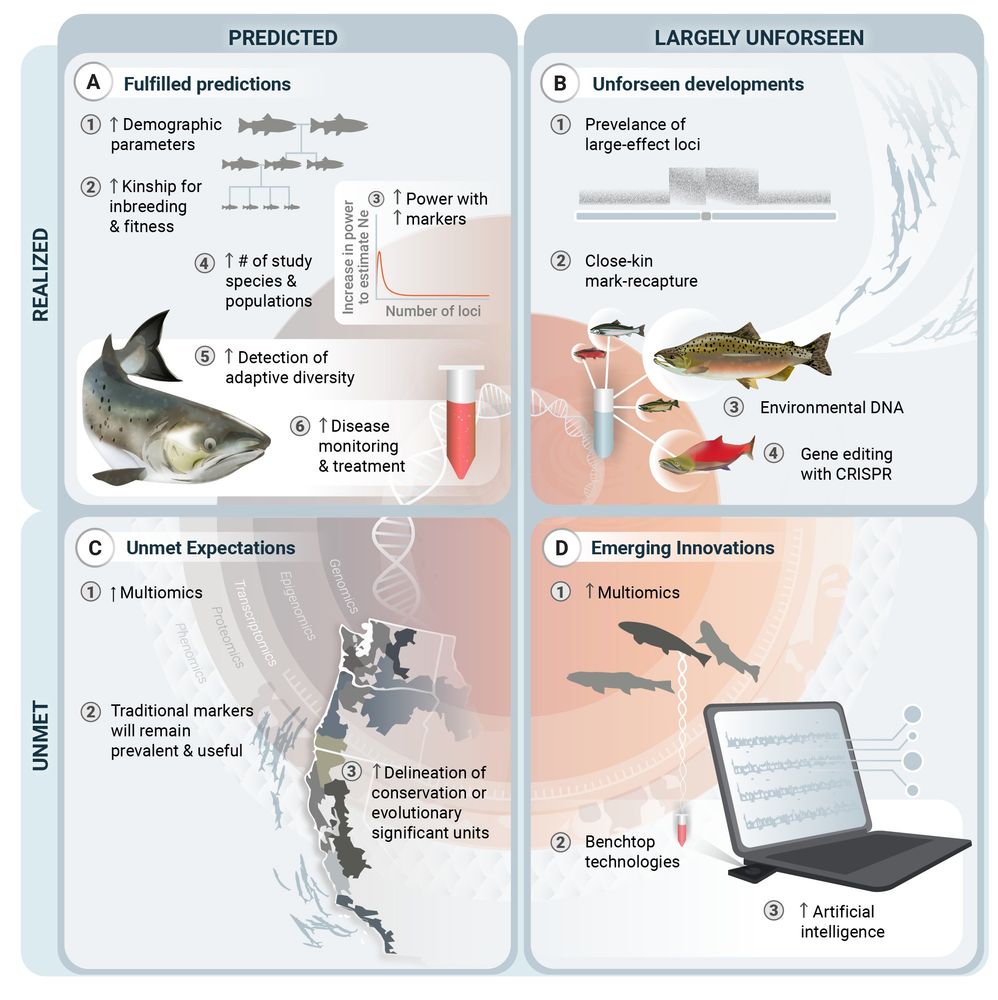
About 15-20 yrs ago, a bunch of reviews (inc. 1 by me) made predictions about the future of genomics in conservation. 1 yr ago at ICISB, Robin Waples assessed which of those predictions had been fulfilled. Sam May & Sam Rosenbaum now led the effort to turn this into a review:
doi.org/10.1111/mec....
21.04.2025 15:31 — 👍 49 🔁 26 💬 2 📌 2

Ooooh, one of our beautiful terns made it to the cover of the issue of Ethology that contains Melina's study on individual behavioral responses to novel stimuli: onlinelibrary.wiley.com/doi/10.1111/...
17.07.2025 12:40 — 👍 36 🔁 6 💬 0 📌 0

Our neighbours at the Banter See are no fan of the terns. Luckily the terns don't give a shit. Oh, or maybe sometimes they do. :-)
07.07.2025 11:19 — 👍 29 🔁 4 💬 0 📌 1
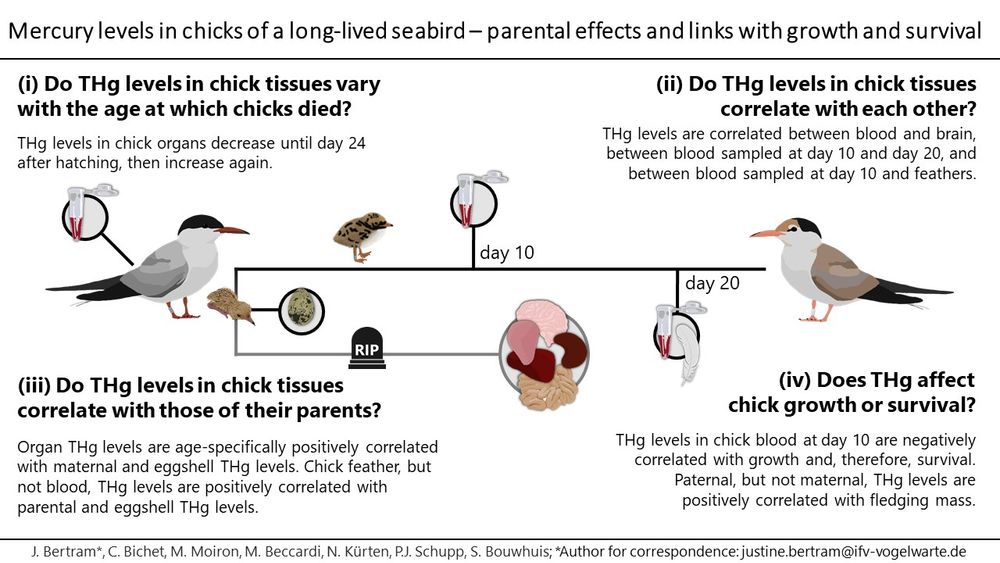
And here it is - Justine's last thesis chapter got accepted too and can now be read as an open access paper in Environmental Research: doi.org/10.1016/j.en...
07.07.2025 15:25 — 👍 25 🔁 10 💬 0 📌 1
Belated but wonderful news: Kriszti Kupán has won a 3-year grant from the Bauer-Hollmann Stiftung for monitoring and developing an integrative #conservation management approach for threatened #ruffs and #dunlins at #Liminganlahti! 🥚🎉🐣
09.07.2025 07:37 — 👍 9 🔁 2 💬 1 📌 0
Such great news for the team and the birds! Big congrats to Kriszti! 🎉🥳
09.07.2025 09:19 — 👍 1 🔁 0 💬 0 📌 0
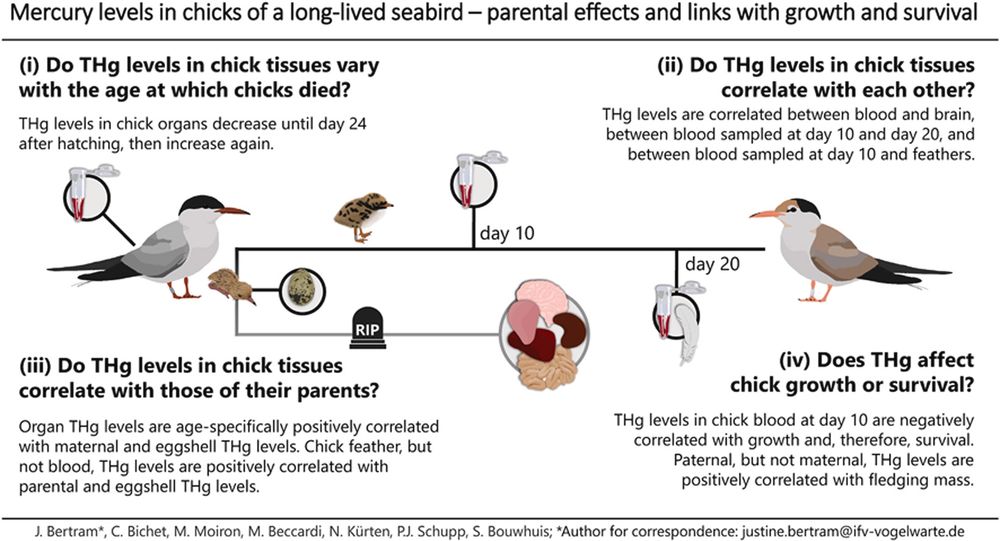
New publication by @commonternproject.bsky.social with @coralinebcht.bsky.social, @mmoiron.bsky.social, @matteobeccardi.bsky.social & @icbm-uol.bsky.social: 'Mercury levels in chicks of a long-lived seabird – parental effects and links with growth and survival'. doi.org/10.1016/j.en...
08.07.2025 08:43 — 👍 15 🔁 8 💬 2 📌 0
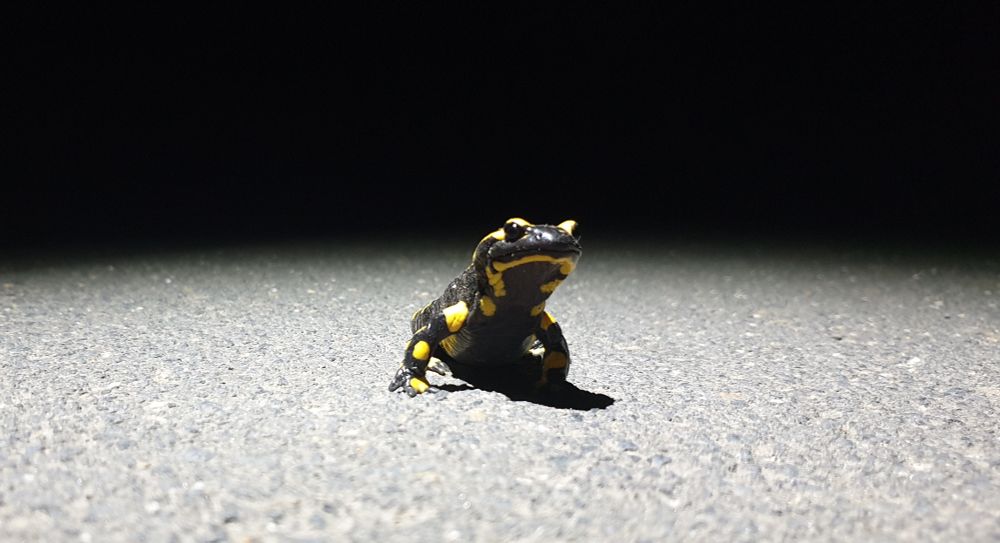
A fire salamander perching on a road.
We asked if salamanders with more warning coloration are bolder and produce more toxin! Read about it in our @mmoiron.bsky.social preprint "The bright, the bold and the toxic: do coloration, personality, and toxicity represent an integrated phenotype in fire salamanders?" doi.org/10.32942/X24...
16.06.2025 17:50 — 👍 7 🔁 2 💬 0 📌 0
Welcome Max!
10.06.2025 10:15 — 👍 1 🔁 0 💬 0 📌 0
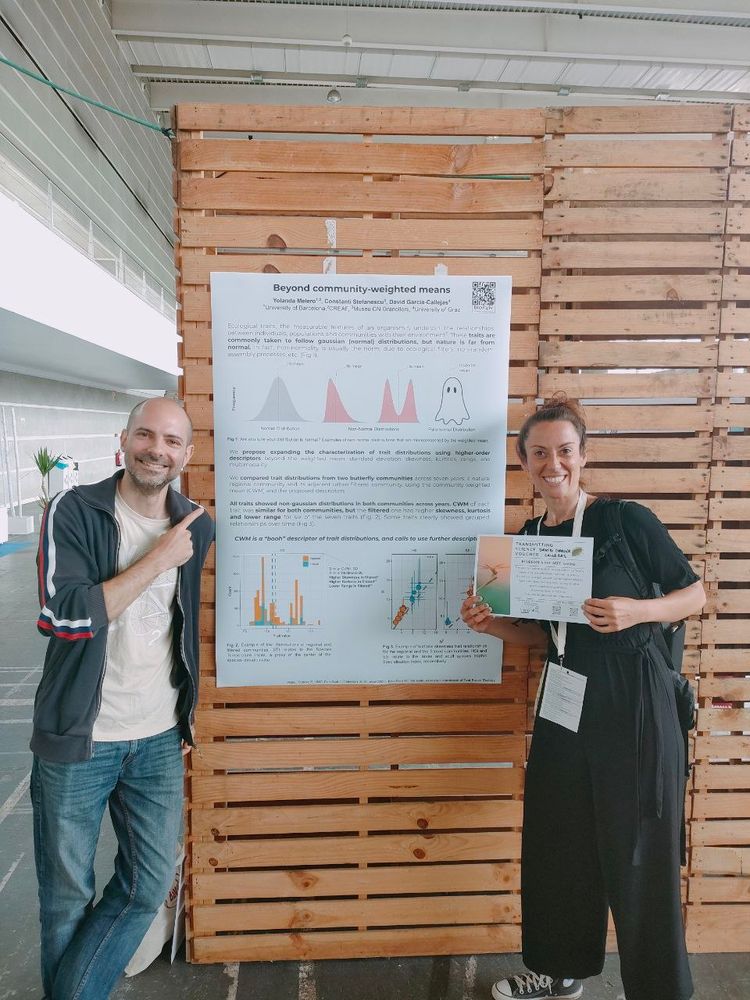
At the SIBECOL conference, besides meeting old and new colleagues and learning a lot, my friend @ylndmc.bsky.social and I won a best poster award for our study on trait distributions - thanks to the organisers for such a nice conference!!
#SIBECOLAEET2025
@sibecol-aeet-25.bsky.social
06.06.2025 07:01 — 👍 32 🔁 5 💬 3 📌 0
68 nests with chicks now. ❤️
02.06.2025 13:47 — 👍 42 🔁 4 💬 0 📌 0
Here’s a video of a fun pilot study on tern personality aspects, in which Melina tested how the birds respond to a novel object placed at their nest. Linea from nest 431 did not care much about an orange cone making an appearance. :-)
28.05.2025 12:24 — 👍 19 🔁 5 💬 1 📌 2
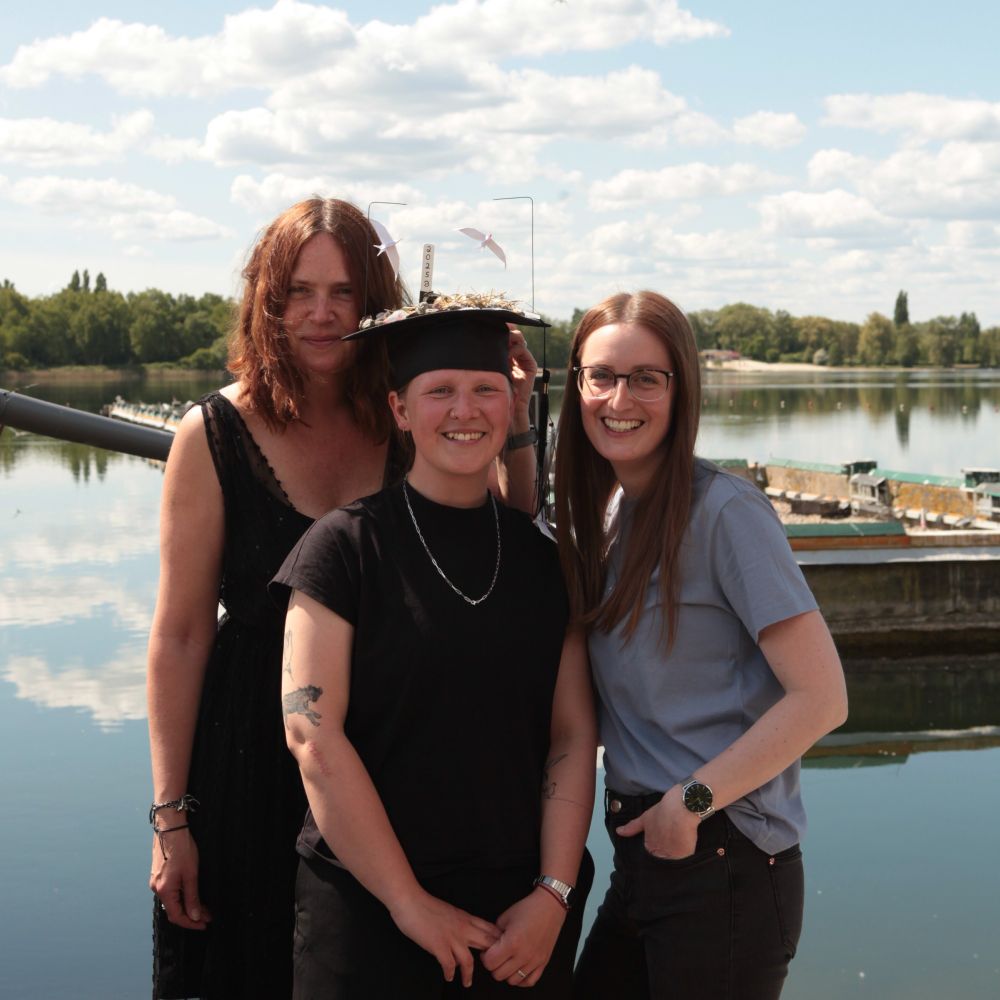
Yesterday, Justine Bertram, the lovely soul in the center of this picture, successfully defended her PhD thesis. As throughout her time with the terns and at the @ifv-whv.bsky.social, she did a brilliant job. I could not be more proud, or sad that she is fledging now.
09.05.2025 09:56 — 👍 24 🔁 3 💬 2 📌 0
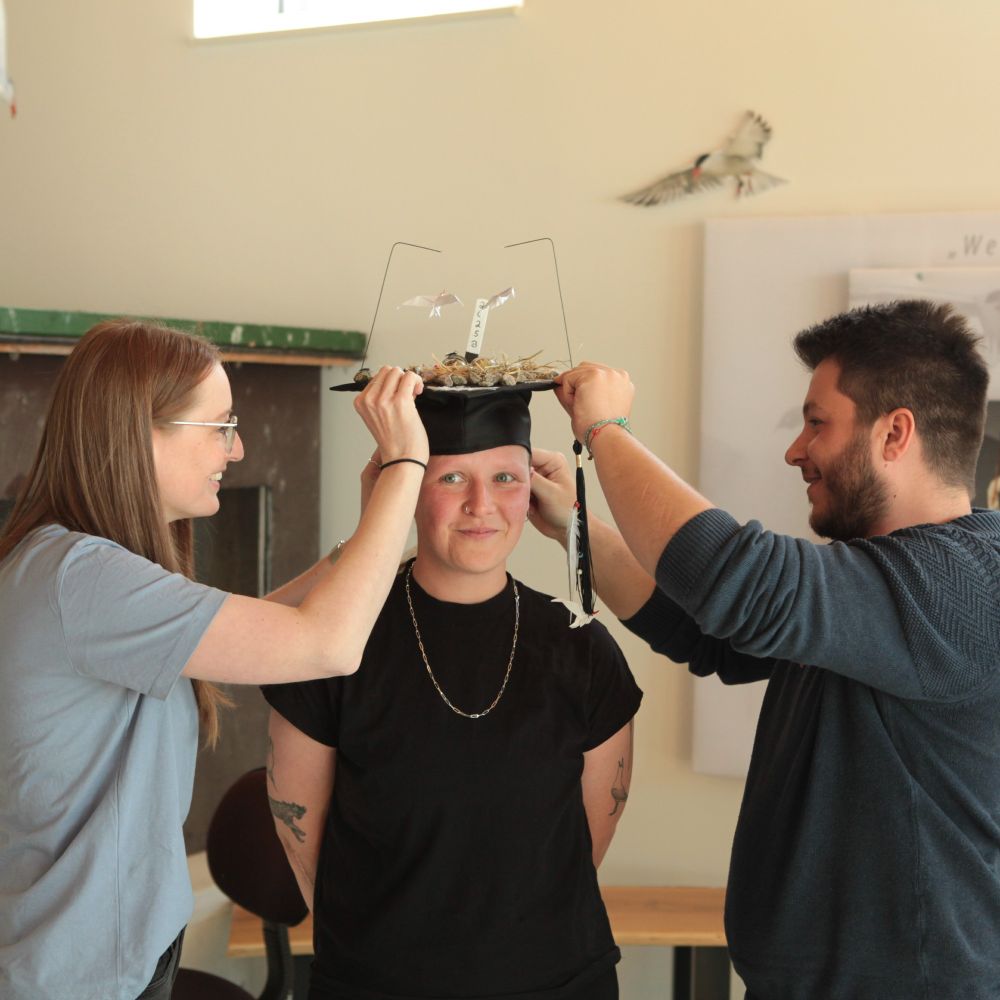
And here's another shout-out to the wonderful tern-and-quail team, which, led by Nathalie and @matteobeccardi.bsky.social, prepared a gorgeous hat for Justine. ♥️
09.05.2025 10:00 — 👍 18 🔁 4 💬 1 📌 0
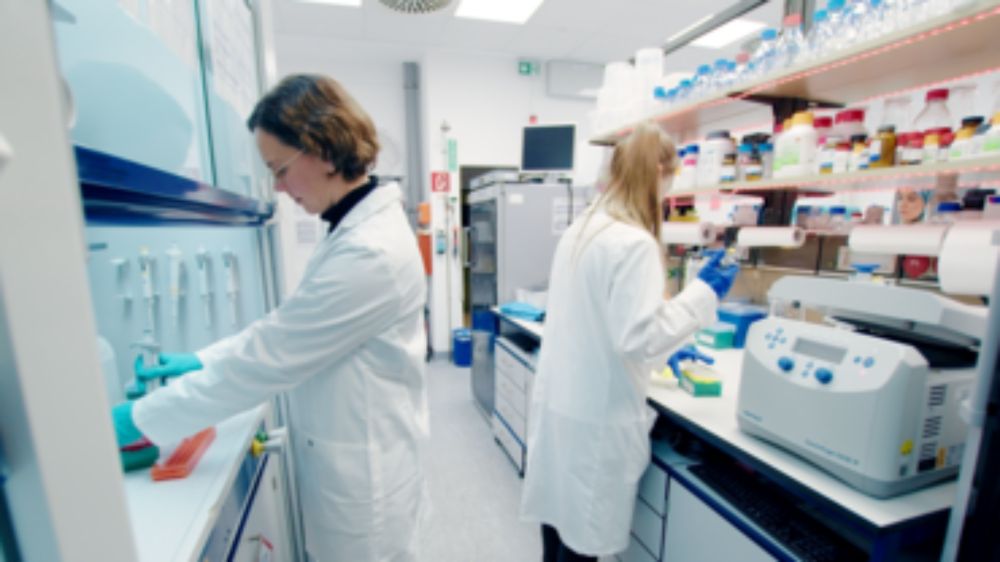
Home - NaviSense
NaviSense - International Cluster of Excellence Proposal for the Sensory Basis, Mechanisms, and Impacts of Animal Navigation.
Grateful & excited that more tern work will be funded through one of the 70 #ClustersOfExcellence granted by the @dfg.de today. From 01/01/2026, ‘Navisense’ will work to provide mechanistic understanding of animal naviation, and support conservation efforts. You can follow along here: navisense.org
22.05.2025 20:08 — 👍 17 🔁 3 💬 0 📌 0

Map showing the tracks (yellow lights) followed to check my set of boxes (red dots) in Wytham Woods
Now that the field season is coming to an end (first day off since late April, I decided to compile some stats of what I have done during the last month.
To check the 208 (reduced a bit in mid-May), I have walked a total of 446km with an accumulated elevation gain of 9431m!
26.05.2025 11:04 — 👍 17 🔁 3 💬 1 📌 1
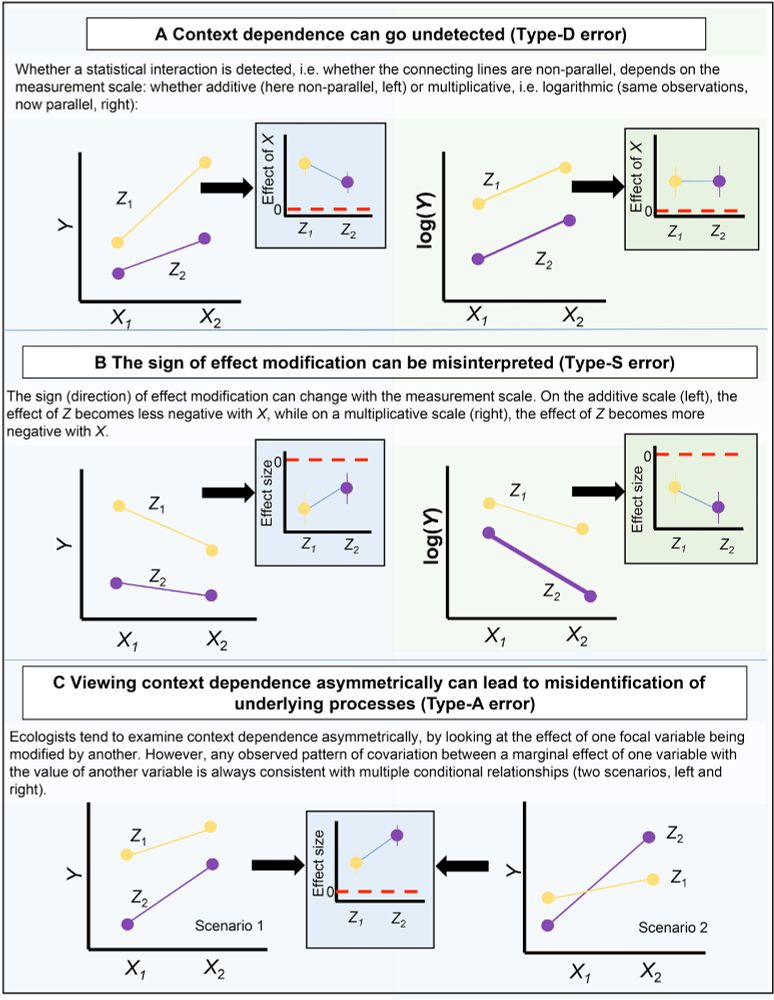
Three common inferential errors when investigating context dependence in ecology. Consider a test of context dependence in its most basic form: a 2 × 2 factorial experiment, measuring an ecological response Y, to the crossing of factors X and Z, each with two levels. The analyst fits a statistical model with an interaction term to the data: Y ~ X + Z + X × Z, to test for and quantify context dependence. Three inferential errors are possible when the measurement scale or symmetry of the interaction are overlooked: detection and magnitude (Type D), sign (Type S) and misidentification of underlying processes (Type A).
Since we are still talking about interactions, I worked with some ecologists a couple of years ago on measurement scale, interactions and interpretation issues. I think some problems arise from failure to distinguish prediction from inference, a chronic problem in ecology imo doi.org/10.1111/brv....
13.05.2025 07:08 — 👍 150 🔁 41 💬 1 📌 0
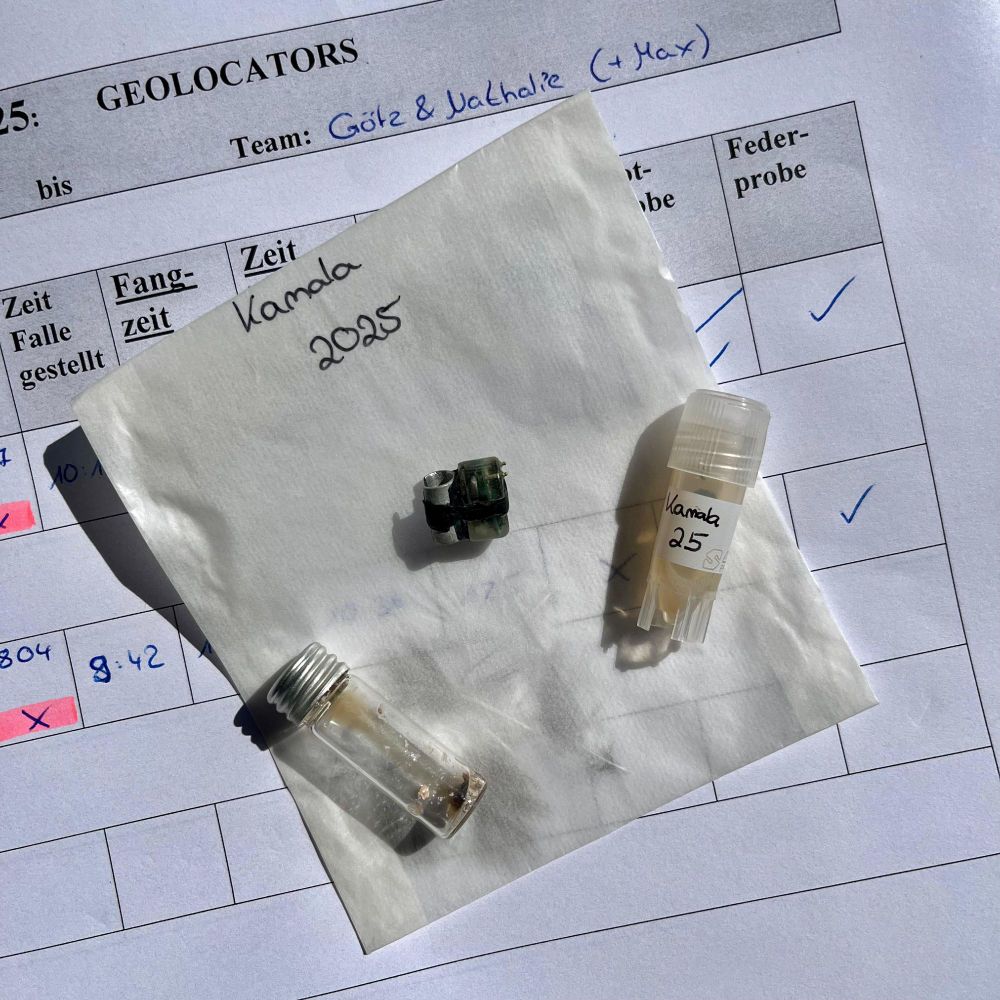
Götz & Nathalie have started catching today. Kamala was 3rd to safely return her #geolocator. Nathalie will be analyzing the track soon, adding Kamala to a subset of 140 other birds for which she has collected data on the #migratorybehaviour as part of her postdoc funded by @sfb1372.bsky.social.
13.05.2025 13:03 — 👍 10 🔁 3 💬 1 📌 0
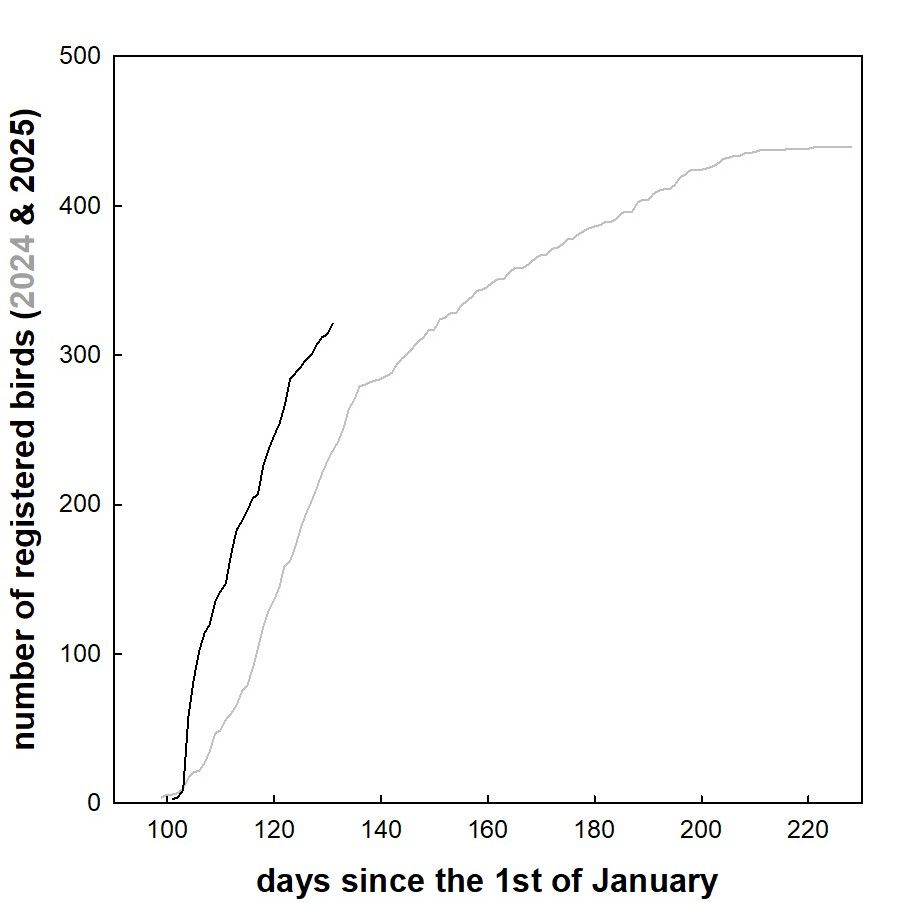
Good morning from the Banter See! Arrival is looking comparatively good this year. 321 registered birds so far (vs. 236 on the same day last year), and counting. #phenology #seabirds
12.05.2025 07:04 — 👍 15 🔁 4 💬 0 📌 0
Ten more days to apply!
Join us in Bayreuth to study how burying beetles use social behaviors to control harmful and beneficial microbial communities during family life!
06.05.2025 08:31 — 👍 3 🔁 5 💬 1 📌 1
New paper now out! 🚀 Evolution isn't just about selection—it's about how each generation changes the environment for the next. We experimentally show evolutionary feedbacks in action in fruit flies. 🧵 (1/) @pnas.org #NSF #SupportNSF
28.04.2025 18:40 — 👍 125 🔁 36 💬 3 📌 4
Posts about jobs, conferences, etc. from the Evolution Directory (EvolDir) mailing list https://evol.mcmaster.ca/evoldir.html, run by Brian Golding. This bot is run by @rdmpage.bsky.social. Problems: https://github.com/rdmpage/evoldir-bluesky/issues
Head of Biodiversity Monitoring | SMNS & Univ. of Hohenheim 🌿🪲🔬🧬
Passionate about species formation & persistence in a changing world. 🏃🏻♂️🌍
Committed to mentoring future scientists & engaged citizens. 🎓💡
https://biodiversitysmns.wixsite.com/rpereiralab
Studying primate communication @ the Pathways to Language group, Uni Tübingen | Master's student in Ecology, evolution and systematics, @ LMU Munich
🦧🪶🪲
PhD Student @ Haberkern Lab
insect connectomics
Previously, Bielefeld University and Ozyegin University
PhD candidate
@MacrophysLab @CES_IISc
Behavioural endocrinology, Animal communication, Colours, Morphometrics
Ecology and Evolution | Individual-based simulations and mathematical modelling | University of Tübingen
Evolutionary geneticist. I think about evolution across timescales and constraints on it from interactions at each scale. I use both population and quantitative genetics to do science. I love music, writing, and my cats (order varies on a daily basis).
Associate Professor at The Australian National University. Meta-analysis, evolutionary physiology, ecology, evolutionary biology, behavioural ecology. I also like statistics. 🇨🇦🇦🇺
ecology, open science, meta-science, evidence synthesis, birds, piano
Behavioural ecologist, meta-analyst & manga-lover
Invasive Species; Biosecurity; Behavioural Ecology; Marine and Freshwater Science; Evidence Synthesis and Meta-Science (him/him/they/them)
Co-founder of Project Implicit, Society for Improving Psychological Science, and the Center for Open Science; Professor at the University of Virginia
Assoc Prof of Methodology and Statistics at Maastricht University. Interests: meta-analysis, ESM/EMA, mixed-effects models, computational statistics, research software, R, FLOSS, GNU/Linux, chess, piano, lolcats. The views expressed are those of my cats.
PhD candidate in Department of Evolutionary Biology, University Bielefeld
Evidence Synthesist and R enthusiast
Open Science Practitioner (firm believer of "Open Science is just Science done right"-Jon Tennant)
#RaptorResearch #AnimalBehaviour #Conservation & #MovementEcology • #Archery Coach 🏹• #JEDI advocate ⚖️ • #Ecuatoriano in 🌎🌍🌏 #HappyHusband💍#ProudDad
#PhDStudent @vdscobene.bsky.social
Ph.D.-student in the Behavioural Ecology group @Uni Bielefeld
I'm interested in evolutionary ecology and herpetology and study personality of fire salamanders in my Ph.D.
Science, evolution, ecology, quantitative genetics
Representation matters! We provide a free, online, interactive course in Evolutionary Biology for students from the Global South who want to start a career in science, but who face systemic knowledge gaps and other barriers! evobiocrashcourse.github.io
Social Evolution & Ecology | Insects, Microbes & Parental Care | Independent Group Leader [ERC Staring Grant Fellow] at Uni Bayreuth (DE)
Studying metabolic evolution, microbial macroevolution, biospheric self-organization, and the feedbacks between Earth and life. Dad, Husband, Scientist.
https://rogierbraakman.com/










